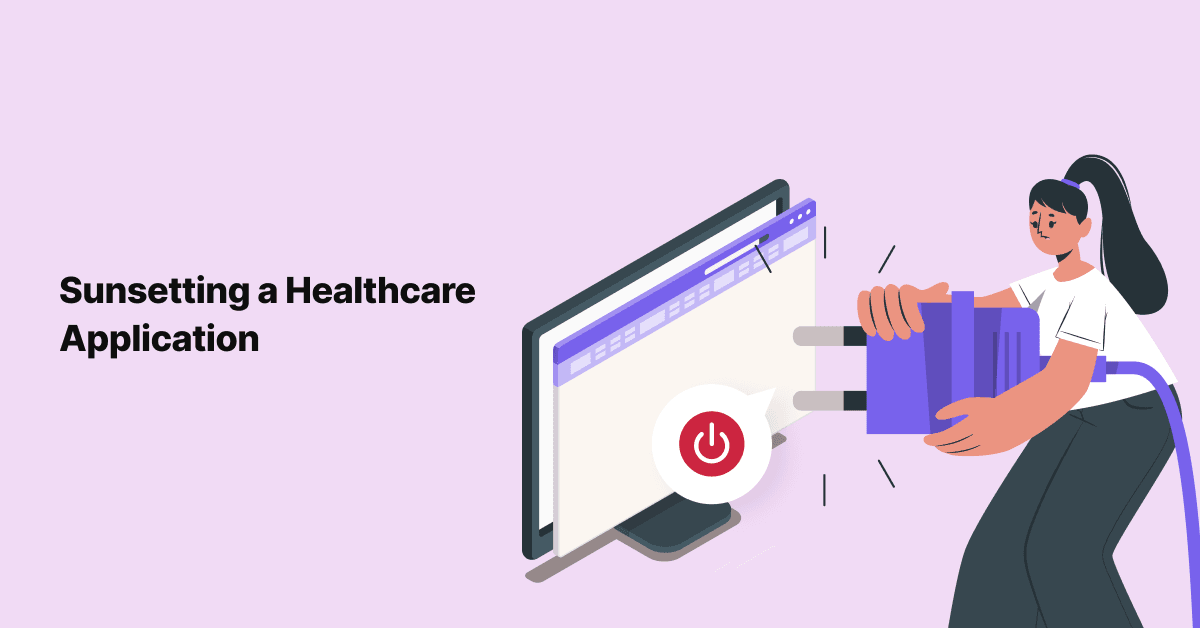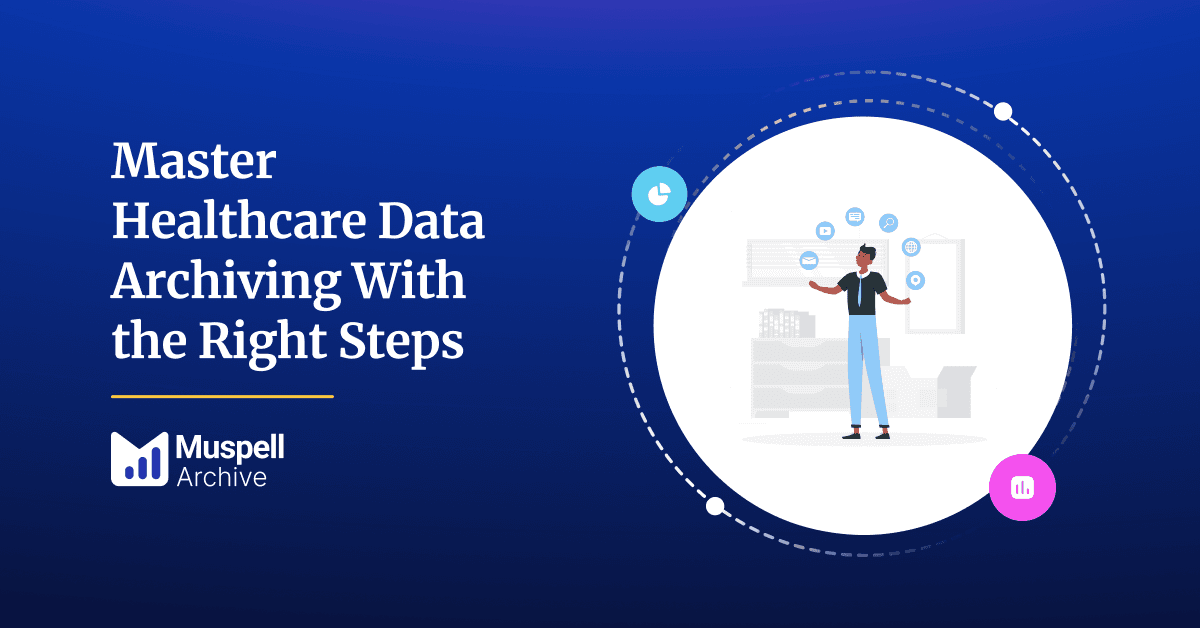
What to Do When Its Time to Sunset Your Healthcare Application
The rapid growth of healthcare has caused the need for efficient management of data and applications to grow …

The advent of protocols such as Fast Healthcare Interoperability Resources (FHIR) brings forth fresh opportunities for healthcare institutions to transform their data practices. FHIR R4 stands as a prevailing industry norm, garnering significant support from the Office of the National Coordinator (ONC).
The 21st Century Cures Act final rule, unveiled in 2020, mandates the integration and utilization of FHIR APIs within mainstream EHR applications, aligning with the United States government's vision for healthcare interoperability. However, the scope of healthcare interoperability shouldn't be confined solely to new healthcare IT applications. Effective care coordination frequently necessitates clinician teams to access historical patient data.
If your healthcare organization's data resides on a legacy system, it creates a data silo that can impede care delivery. In this blog post we review the strategic benefits of embracing a healthcare data archival solution native to FHIR, as well as delve into the distinctions between FHIR-native and FHIR-compliant solutions.
While FHIR-compliant solutions adhere to the FHIR standard, FHIR-native solutions are inherently built upon FHIR principles, offering a more integrated and streamlined approach to data management. Maintaining legacy health data in the FHIR model obviates the need for further transformation, taking away significant cost burden. FHIR-native solutions eliminate the need for a software layer that converts data into the FHIR format, enabling healthcare solutions to cut costs and comply with the Cures Act Final Rule mandates for sharing data with patients using FHIR APIs.
Healthcare data is characterized by its complexity and constant evolution. FHIR-native solutions are uniquely equipped to handle the dynamic nature of healthcare data, providing a more agile and responsive framework for archiving and accessing information. A FHIR-native data model is also capable of adapting to future changes that are directed by healthcare regulations.
Unlike FHIR-compliant solutions that may require additional layers of abstraction and transformation, FHIR-native solutions operate natively within the FHIR ecosystem, minimizing complexity and enhancing interoperability. The following are the essential differences between both the platforms.
FHIR-native:
#1: FHIR-native refers to healthcare data systems or solutions that are designed and built from the ground up using the FHIR standard as their primary data format and communication protocol.
#2: In a FHIR-native system, data is stored, retrieved, and exchanged directly in the FHIR format without significant transformation or conversion.
#3: This approach allows for seamless integration and interoperability with other FHIR-compliant systems and applications.
FHIR Compliant:
#1: FHIR-compliant refers to healthcare data systems or solutions that may not have been originally designed with FHIR as their primary data format, but have been adapted or extended to support FHIR standards.
#2: In a FHIR-compliant system, there may be a layer or middleware that translates between the system's internal data format and the FHIR format when exchanging data with other FHIR-compliant systems.
#3: This approach allows existing healthcare systems that may use different data formats or standards to become compatible with FHIR for interoperability purposes.
Seamless Integration: Converting data into the FHIR format in advance allows for seamless integration with other FHIR-native systems, especially those government agencies that require FHIR enablement.. Since all systems are using the same standard, data exchange becomes more straightforward. FHIR-native solutions seamlessly integrate with existing healthcare systems and workflows, facilitating smooth data exchange and interoperability across disparate platforms. By leveraging FHIR's standardized data format, organizations can avoid compatibility issues and achieve greater synergy among their various systems and applications.
Compliance With Government Regulations: Compliance with government regulations is paramount, particularly as the US government pushes FHIR to become the interoperability standard for healthcare data. This initiative requires all current and forthcoming entities in the healthcare sector to adhere to these industry standards. Fortunately, tools are readily available to facilitate the transition to structured data formats, eliminating the need for additional transformation steps. A FHIR-native healthcare data archival solution is one such tool that helps healthcare organizations with data transformation.
Robust Data Storage: FHIR-native data archiving solutions offer robust storage capabilities, allowing organizations to securely store vast amounts of healthcare data while ensuring accessibility and scalability. With features such as versioning and resource segmentation, FHIR-native platforms enable efficient data retrieval and management, empowering healthcare providers with comprehensive insights into patient health histories and treatment protocols. Storing data natively in the FHIR format is very effective when dealing with variable data from multiple sources. Moreover, FHIR's extensibility approach renders handling of unpredictable data seamless.
Real-time Access: One of the key advantages of FHIR-native archiving is the ability to access real-time data effortlessly. By leveraging FHIR's RESTful APIs, healthcare professionals can retrieve patient information instantaneously, enabling timely decision-making and personalized care delivery. Whether accessing data from electronic health records (EHRs), medical devices, or wearables, FHIR-native solutions provide a unified interface for accessing and exchanging healthcare information in real-time.
Reduced Data Transformation Costs: FHIR-native solutions help maintain higher data quality and deliver a structured approach to advancing healthcare interoperability. With the industry aligning itself with a FHIR based technology ecosystem, numerous tools are available to ensure that the care facilities check and maintain a higher data quality. FHIR-native solutions also eliminate the need for extensive data transformation, as data is stored and exchanged in a standardized FHIR format from the outset. This reduction in overhead not only simplifies data management processes but also minimizes the risk of errors and inconsistencies associated with manual data manipulation.
Adopting a FHIR-native strategy offers organizations numerous strategic benefits including smooth integration, resilient data storage, immediate access, and minimized data transformation burdens. With ongoing evolution in the healthcare sector, FHIR-native solutions are poised to be instrumental in fostering innovation, enhancing patient outcomes, and promoting interoperability throughout the healthcare landscape. Embracing FHIR-native archival solutions isn't merely a technological necessity; it represents a strategic imperative for organizations aiming to excel in the digital era of healthcare.
Explore Muspell Archive, a bespoke FHIR-native healthcare data archival solution.
Join over 3,200 subscribers and keep up-to-date with the latest innovations & best practices in Healthcare IT.

The rapid growth of healthcare has caused the need for efficient management of data and applications to grow …

Effective patient data management stands as a cornerstone for providing optimal care and streamlining …

Digitization has revolutionized our every day, and while it is true that it has improved efficiency, it is …